Top African Safari Destinations for First Timers and Seasoned Explorers
19-05-2025
An African safari isn’t just a vacation – it’s a once-in-a-lifetime adventure you’ve likely dreamed about for years, and now it’s your time to make it real. For others, the magic is so profound that one trip is never enough. At Flying Carpet, we’re helping both kinds of travelers find their path – safari destinations for first timers to get a delightful glimpse of a lion through morning mist and for the pros who return to walk the dry riverbeds of Ruaha.
At FlyingCarpet.travel, we recognize that first-time travelers need ease of access, reliable game viewing, and well-supported logistics, while seasoned adventurers often crave remoteness, fewer people, and deeper immersion. This guide shares our most trusted recommendations:
Table of Contents
- 1. Best African Safari Destinations for First-Time Travelers
- 2. Serengeti National Park, Tanzania
- 3. Ngorongoro Crater, Tanzania
- 4. Maasai Mara National Reserve, Kenya
- 5. Kruger National Park, South Africa
- 6. Okavango Delta, Botswana
- 7. Best African Safari Destinations for Repeat Travelers
- 8. South Luangwa National Park, Zambia
- 9. Ruaha National Park, Tanzania
- 10. Selous Game Reserve (Nyerere National Park), Tanzania
- 11. Damaraland, Namibia
- 12. Expert Tips for Planning and Preparing Your Safari
- 13. Frequently Asked Safari Questions, Answered by Experts
Best African Safari Destinations for First Time Travelers
Our list for first-time safari-goers prioritizes destinations that offer exceptional wildlife sightings, ease of logistics, availability of experienced guides, and a range of accommodations that balance comfort and authenticity. These are places where the learning curve is gentle – but the magic is real.
Serengeti National Park, Tanzania
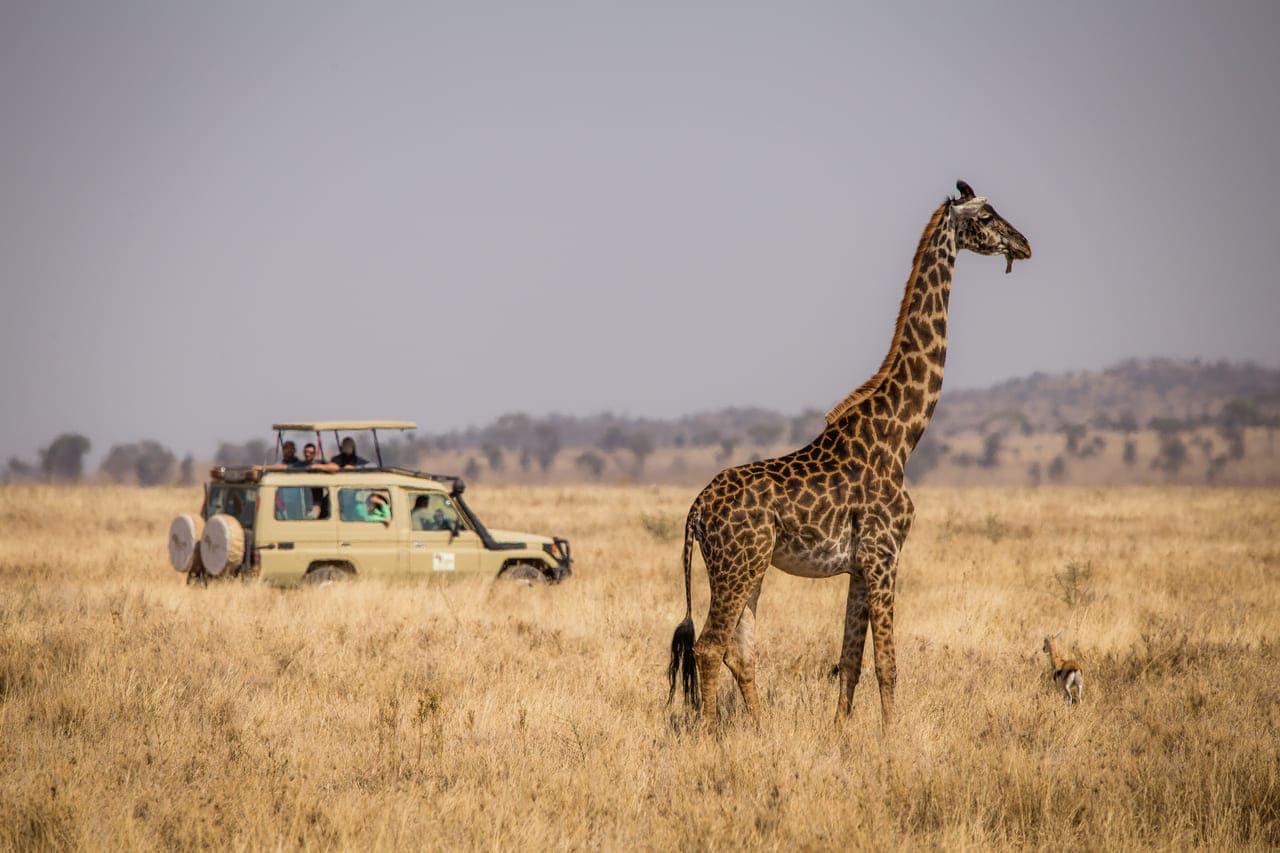
The picture-perfect Africa – endless golden plains, great herds moving in unison, predators lurking in the tall grass – this is it. The Serengeti is the stage for one of the greatest wildlife spectacles on earth: the Great Migration. From June to August, millions of wildebeest and zebra thunder across the plains, closely followed by big cats in a dance of survival and instinct. First-timers will appreciate the range of accommodations, from classic tented camps to ultra-luxury lodges, and the sheer predictability of sightings.
Book a luxury balloon safari with breakfast in Serengeti.
How to reach: Fly into Kilimanjaro International Airport (JRO) by Ethiopian or KLM. From here, take a bush flight (Coastal Aviation or Auric Air) into the Serengeti.
Ngorongoro Crater, Tanzania
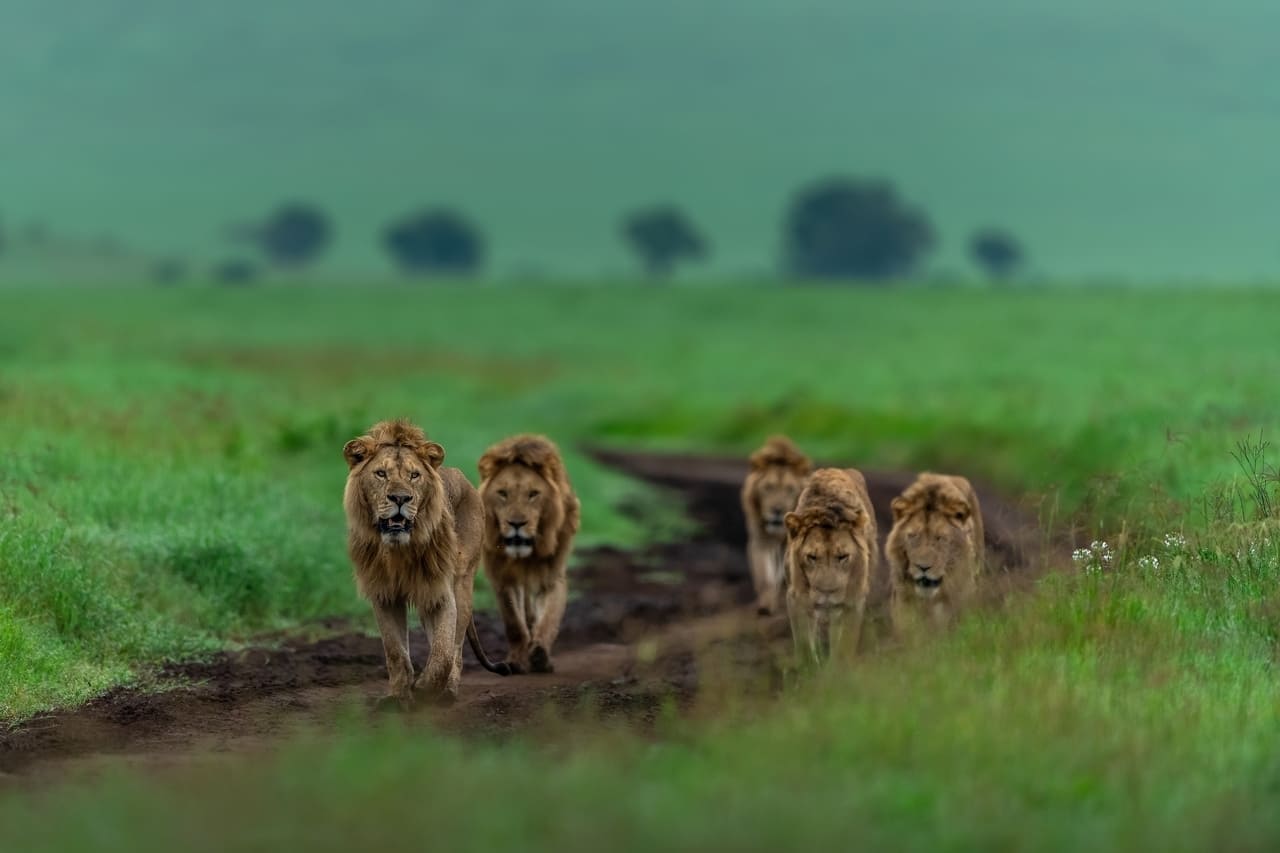
A natural amphitheater teeming with wildlife, the Ngorongoro Crater is often called Africa’s Garden of Eden – and for good reason. In a single game drive, you might spot lions, rhinos, elephants, and flamingos – all within the caldera’s lush, self-contained ecosystem. This safari destination for first timers, offers that immediate ‘wow’ factor: epic views from the crater rim, a sense of scale and spectacle, and an ease of logistics that makes it ideal as part of a northern Tanzania circuit. It’s especially great paired with the Serengeti for those wanting variety within a single itinerary.
How to reach: Fly from major US cities to Kilimanjaro (JRO) with Ethiopian Airlines for the shortest flight time. From here, you can take a domestic flight to Lake Manyara Airstrip, which is approximately a 1.5-hour drive from the Ngorongoro Crater.
Maasai Mara National Reserve, Kenya
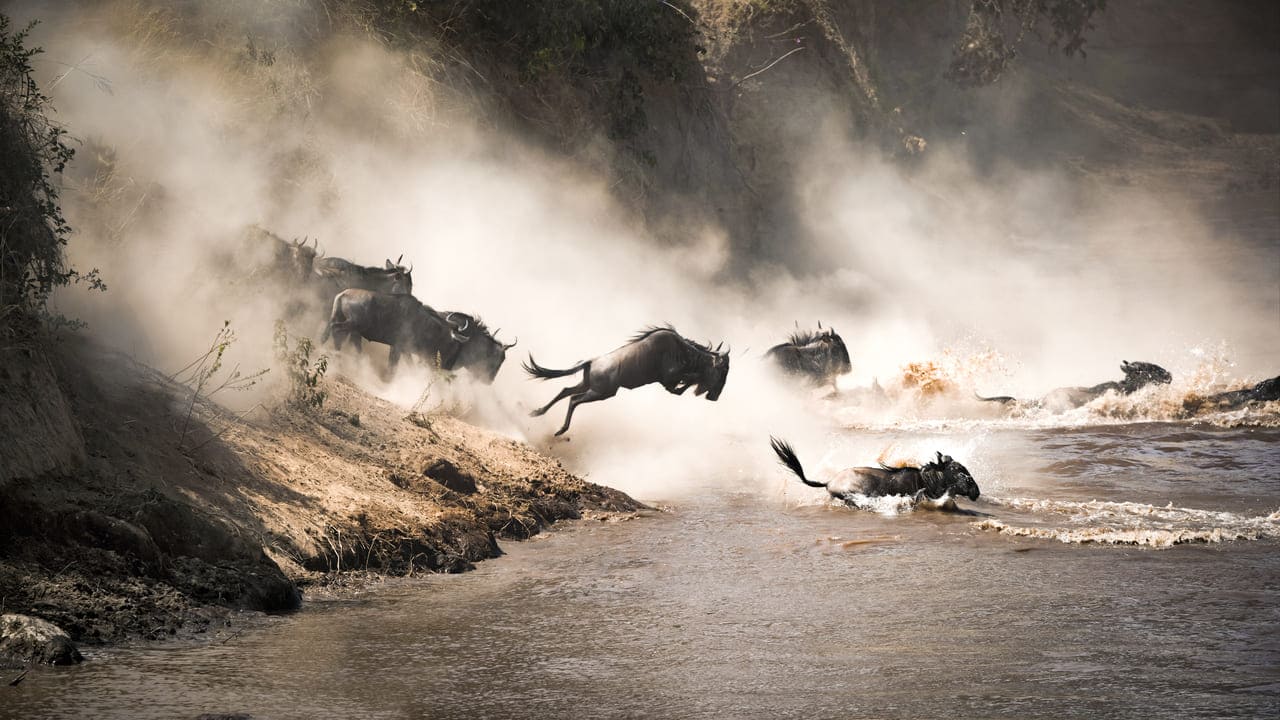
The Mara is the Serengeti’s northern cousin and equally iconic. It’s intimate, cinematic, and absolutely teeming with wildlife. For travelers who want a safari with soul, the Mara delivers: dramatic river crossings, lion prides sprawled under acacia trees, and the chance to engage with Maasai communities whose traditions still pulse through the land. It’s also the best place in Africa to spot big cats, and in migration season, the action is nonstop.
Reserve a balloon safari tour in Maasai Mara.
How to reach: Fly from major US cities like New York, Atlanta or Chicago to Jomo Kenyatta International Airport (NBO) in Nairobi by Kenya Airways. From here, take a domestic bush flight like Safari Link to one of several airstrips in the Maasai Mara.
Kruger National Park, South Africa
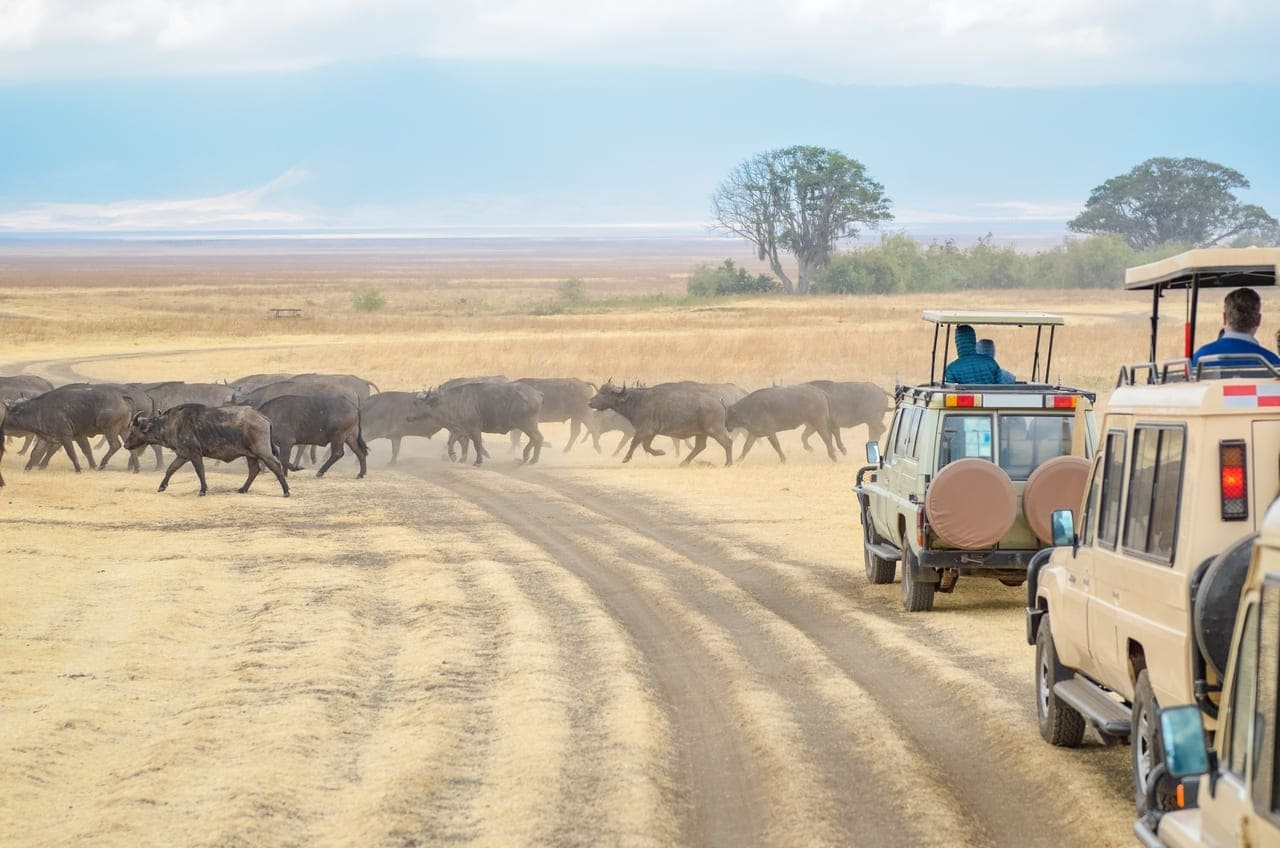
Accessible, affordable, and incredibly rewarding, Kruger is Africa’s most user-friendly safari park. For American travelers who want the flexibility of a self-drive or the comforts of a full-service lodge, Kruger offers both. Expect paved roads, exceptional infrastructure, and the near certainty of seeing the Big Five—often within a single day. From Johannesburg, it’s a short flight or a half-day scenic drive to one of Kruger’s many gates. Bonus: it’s a great option for families or first-time travelers with limited time.
Experience our full day safari trip in Kruger.
How to reach: From Johannesburg, take a domestic flight to Kruger Mpumalanga International Airport (MQP), or alternatively, drive (~4-5 hours) to Kruger National Park. Many safari operators also offer charter flights directly to the park’s airstrips for a quicker, more exclusive experience.
Okavango Delta, Botswana
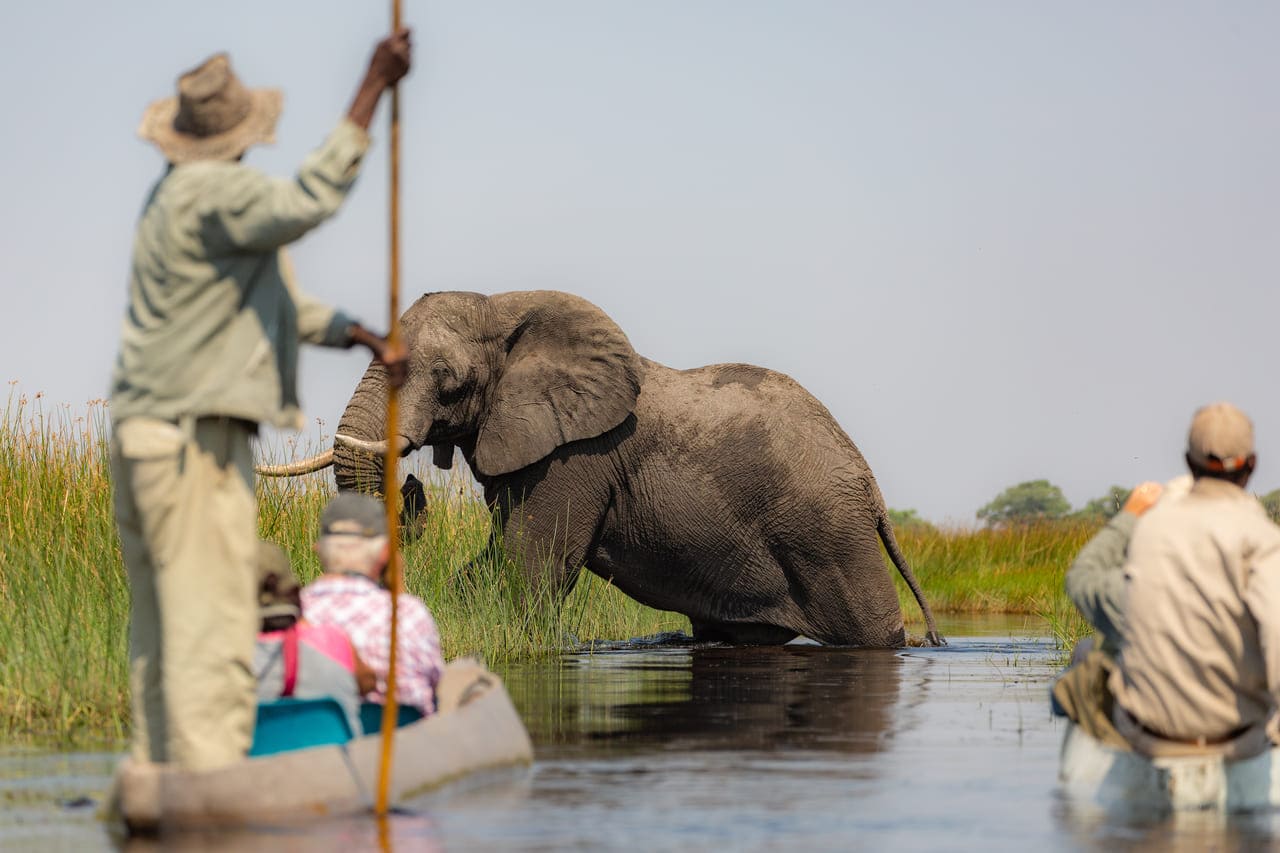
In the Okavango, the drama unfolds not on dusty roads but in serene water channels navigated by mokoro (dugout canoe). Hippos grunt from the shallows, elephants wade across flooded plains, and rare antelope glide through reed beds. The Delta is a paradise for nature lovers who crave immersion. Luxurious island lodges offer all-inclusive experiences with private guides, gourmet meals, and soul-stirring isolation.
How to reach: Air Botswana offers direct flights to Maun from Gaborone (GBE), Johannesburg (JNB) and Cape Town (CPT). Upon arrival in Maun, transfer to charter flights like Mack Air or Moremi Air, which fly directly to airstrips near your safari lodge within the Okavango Delta. These scenic flights offer breathtaking aerial views of the Delta’s intricate waterways and wildlife.
Botswana is one of the safari destinations for first timers. To know more about the African safari experience here, read:
Botswana’s Best National Parks for an Authentic Wildlife Safari.
Best African Safari Destinations for Repeat Travelers
For travelers returning to Africa, we recommend parks that offer intimacy, off-grid experiences, and a deeper connection to land and culture. These are places where wildlife encounters feel more personal, and travelers can enjoy the luxuries of silence, space, and surprise.
South Luangwa National Park, Zambia
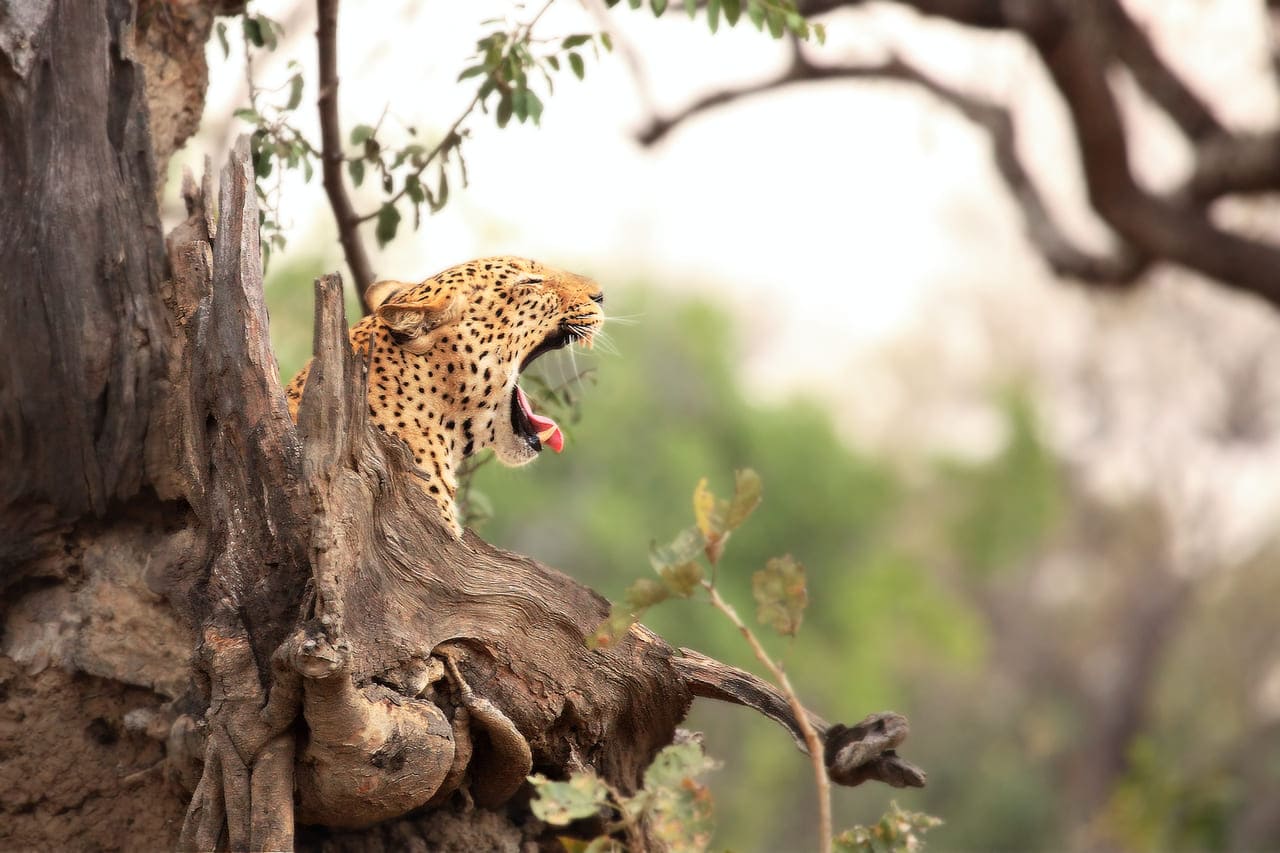
South Luangwa is where seasoned safari-goers come to slow down. Known as the birthplace of the walking safari, this park invites you to follow wildlife on foot with expert rangers, hear the crunch of footprints in dry riverbeds, and feel the hush of dawn before a leopard’s call. Night drives here are legendary, revealing creatures most never see: genets, civets, bush babies. Lodges are intimate and conservation-forward, and the journey to Mfuwe is surprisingly seamless.
Book this experience with a guide.
How to reach: Fly with Proflight Zambia from Lusaka (LUN) or Livingstone (LVI) to Mfuwe Airport (MFU), the gateway to South Luangwa.
Ruaha National Park, Tanzania
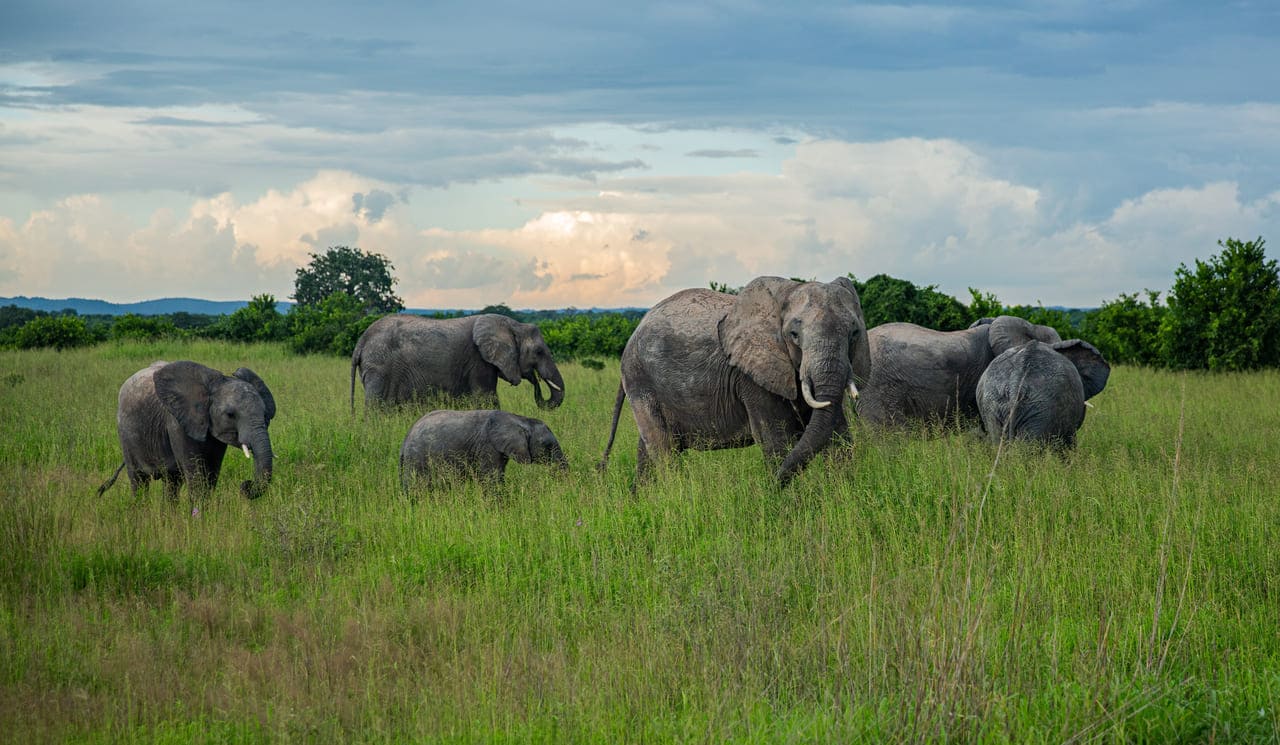
Unfiltered and untamed, Ruaha is Tanzania’s best-kept secret. Towering baobabs rise above golden plains, and game viewing is incredibly rewarding: wild dogs, lion prides, massive elephant herds. What makes Ruaha magical is its solitude—you may drive for hours without seeing another vehicle. It’s wild in the truest sense and ideal for travelers who want to feel completely off-grid.
Reserve this off-the-beat safari experience.
How to reach: Fly from the US with Ethiopian Airlines to Dar es Salaam (DAR) via Addis Ababa (ADD). From Dar es Salaam, take a Precision Air domestic flight to Iringa Airport (IRI), followed by a 2.5 to 3.5-hour road transfer to Ruaha.
Selous Game Reserve (Nyerere National Park), Tanzania
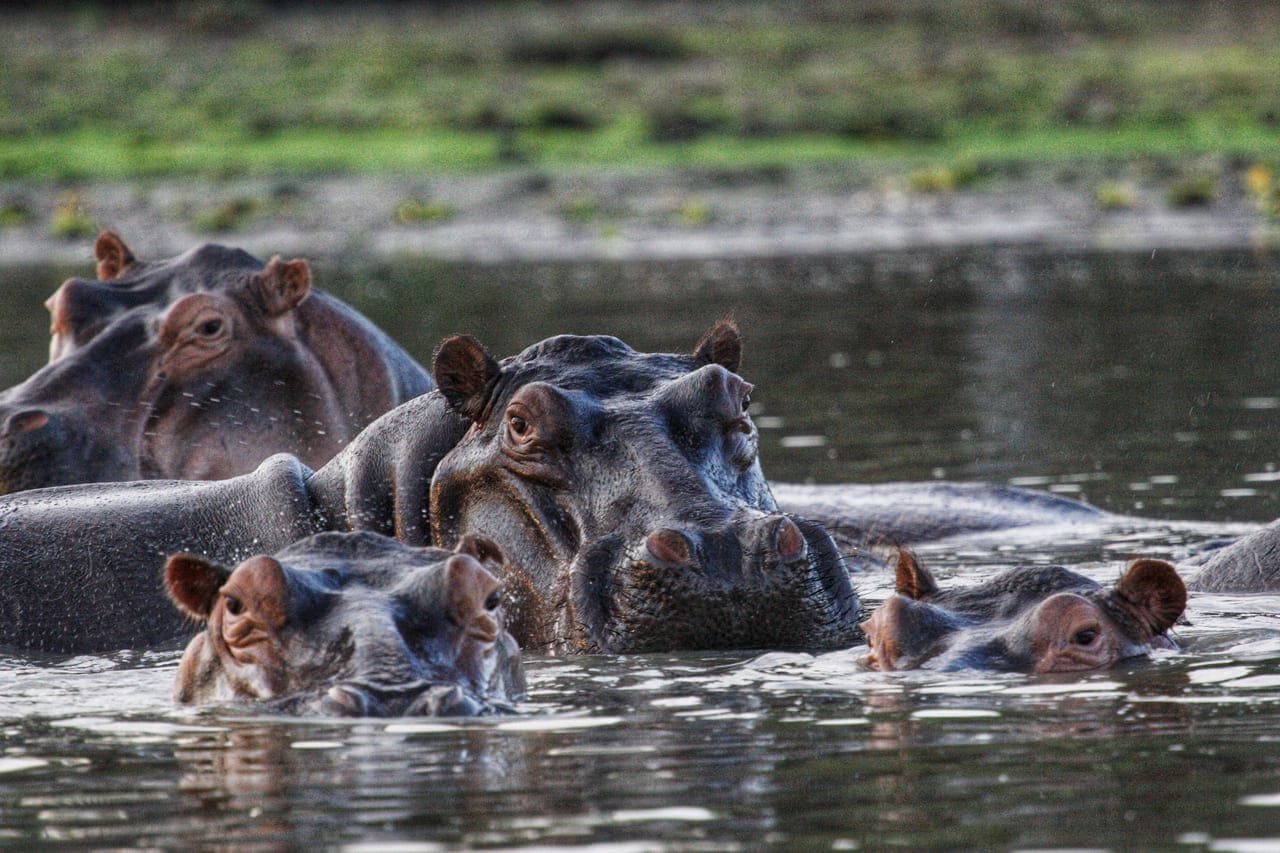
Africa’s largest game reserve offers a different kind of rhythm – one that flows through waterways instead of roads. Boat safaris on the Rufiji River reveal hippos, crocodiles, and an abundance of birdlife. Between fly-camping adventures and tigerfish angling, you’ll discover a style of safari that’s deeply immersive. Its strong conservation ethic and low visitor numbers make it an inspired second (or third) journey into the wild.
Book this guided tour with us.
How to reach: Precision Air operates flights to nearby airports such as Iringa Airport (IRI) that facilitate travel to Selous Game Reserve (now officially part of Nyerere National Park). For more direct access to Selous, Safari Air Link, Coastal Aviation, Auric Air or ZanAir operate scheduled flights from ulius Nyerere International Airport (DAR) in Dar es Salaam or Arusha Airport (ARK) to airstrips within the reserve, such as Mtemere, Siwandu, and Beho Beho.
Damaraland, Namibia
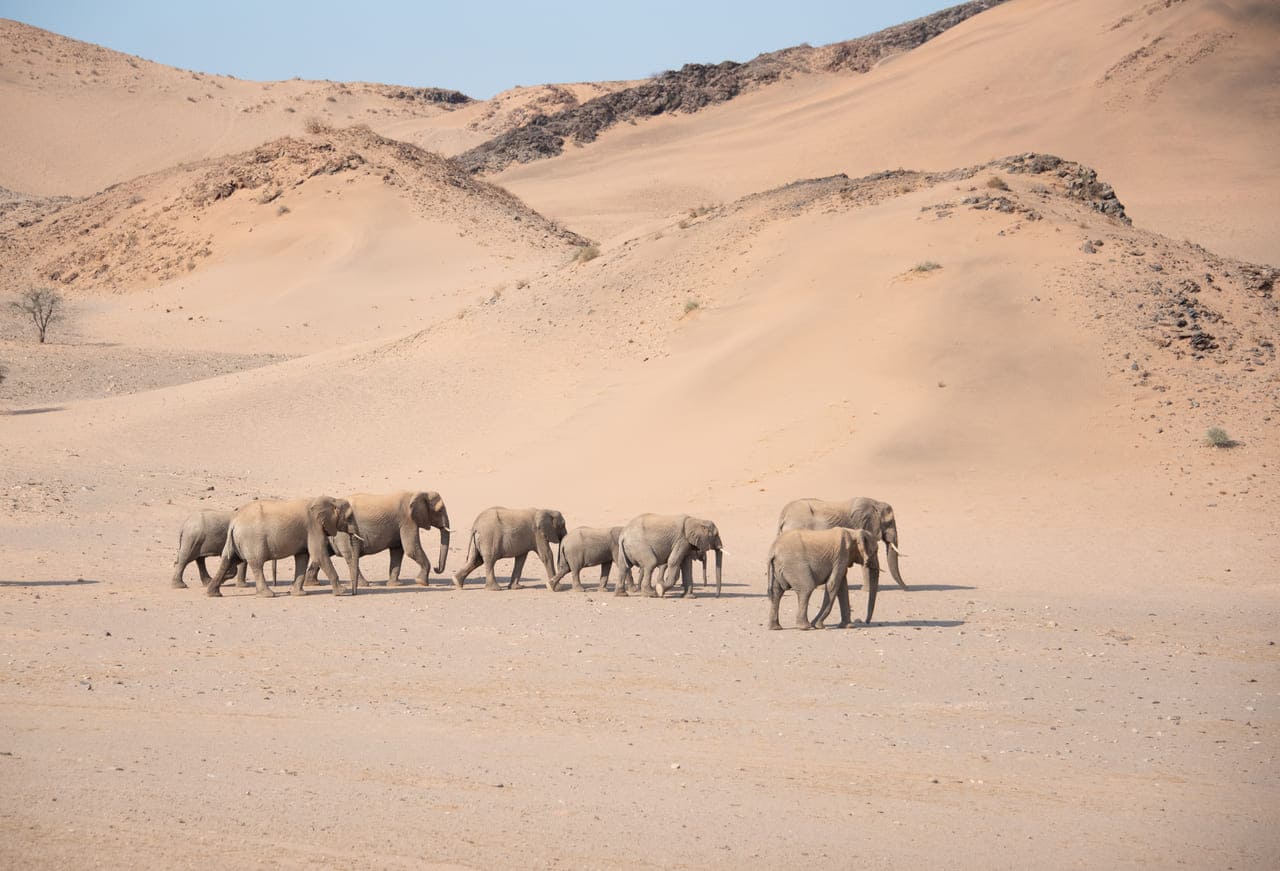
Safari becomes abstract art in Damaraland. Imagine desert-adapted elephants traversing Mars-like landscapes, ancient rock engravings at Twyfelfontein, and oryx outlined against crimson dunes. This is a place for travelers who want to disconnect and feel the silence of something bigger than themselves. Sunsets are dramatic and the experience – otherworldly.
How to reach: Fly into Hosea Kutako International Airport (WDH) in Windhoek, via Addis Ababa with Ethiopian Airlines. From Windhoek, you can either take a scheduled charter flight to nearby airstrips such as Twyfelfontein or drive (~6–8 hours) by 4×4 on a self-drive or guided tour.
Expert Tips for Planning and Preparing Your Safari
When is the best time to go on an African safari?
For first-time safari travelers to Africa, the dry season (May–October) is ideal: wildlife clusters around shrinking water sources, and vegetation is sparse, make animal spotting easier. Repeat travelers often prefer the lush green season (November–April), when the landscape transforms, birdlife is abundant, and newborn animals are everywhere. You can also find out more about where to go in which month in our detailed Africa safari guide calendar.
How long to stay for an Africa safari?
If it’s your first safari, plan for at least 4 to 5 nights trip to adjust to the rhythm of the bush and increase your chances of big game sightings. Returning travelers may opt for 7 to 10 nights to explore diverse ecosystems at a relaxed pace – think walking safaris, boat cruises, and enriching cultural experiences along the way.
How much should you budget for an African safari?
The budget for African safaris ranges widely, depending on the destination and the level of comfort. Self-drive safaris in South Africa can start at $150 per person per night, while exclusive mobile tented camps in private conservancies may run between $500–$1,200 per night. Our role is to help you spend wisely – not necessarily more, but on what matters to you most: comfort, privacy, or immersion.
Which is better – fly-in vs. drive-in?
First-timers often love the ease and aerial drama of a fly-in safari – no bumpy roads, just scenic bush flights that drop you near the lodge. For return travelers, overland routes can be rewarding if you want to understand the landscape more intimately.
What should you pack for an African safari?
Neutral colors, lightweight layers, and breathable fabrics are key. Bring binoculars (trust us, don’t skip this), a wide-brimmed hat, sunblock, and a power bank. And don’t worry, most lodges have laundry service, so you can pack light.
What health & safety measures should be taken before a trip to an African safari?
Consult your physician 6 to 8 weeks before departure. Depending on your itinerary, yellow fever vaccination and malaria prophylaxis may be required. Travel insurance with medical evacuation coverage is non-negotiable, it’s peace of mind you’ll be glad to have.
Does African safari support sustainable travel?
The safari destinations, experiences and hotels recommended by FlyingCarpet.travel prioritizes partners who operate responsibly: solar-powered camps, plastic-free policies, support local employment, and direct support for conservation efforts.
Frequently Asked Safari Questions, Answered by Experts
Will I see the Big Five on my first safari?
If you’re headed to places like the Serengeti, Maasai Mara, or Kruger – yes, you have a very good chance. But the joy of safari lies in the unexpected. Every game drive offers a new storyline.
Is an Africa safari safe for first timers?
Yes. Reputable lodges and guides follow strict safety protocols. Your guide is your best ally – follow their lead, respect boundaries, and you’ll be in excellent hands.
Is an Africa safari family-friendly?
Absolutely! Many camps in Kenya and South Africa welcome families, with specially designed activities for kids. Just check age limits and child-friendly policies when you book.
What kind of accommodation can I expect in safari places?
From five-star suites with plunge pools to canvas tents with open-air showers, safari lodging ranges from wildly luxurious to delightfully simple based on your budget and the kind of experience you’re looking for in popular safari destinations. On the other hand, off-the-beaten-path safari places are less touristy and remote, hence there are fewer accommodation options.
What is the Wi-Fi situation like in the camps?
Most camps offer Wi-Fi in common areas, but it’s often limited. Take it as a nudge from nature to unplug, at least for a little while.
How does FlyingCarpet.Travel Recommend National Parks for Safaris?
We help travelers choose the right national park based on the kind of experience they’re seeking. Whether it’s your first or fifth time on safari, we recommend flight options to destinations that offer not just iconic wildlife, but the right mix of accessibility, atmosphere, and authenticity. For first-time travelers, we prioritize easy connections, strong infrastructure, and reliable sightings. For return travelers, we recommend places that feel wild, remote, and deeply personal.
Whether you’re stepping into the savanna for the first time or returning to uncover Africa’s quieter wonders, our safari experiences are anything but ordinary. From fly-in journeys to walking trails, starlit tents to sustainable sanctuaries, when you book hotels and experiences with FlyingCarpet.Travel, it changes you in ways no guidebook can predict.
